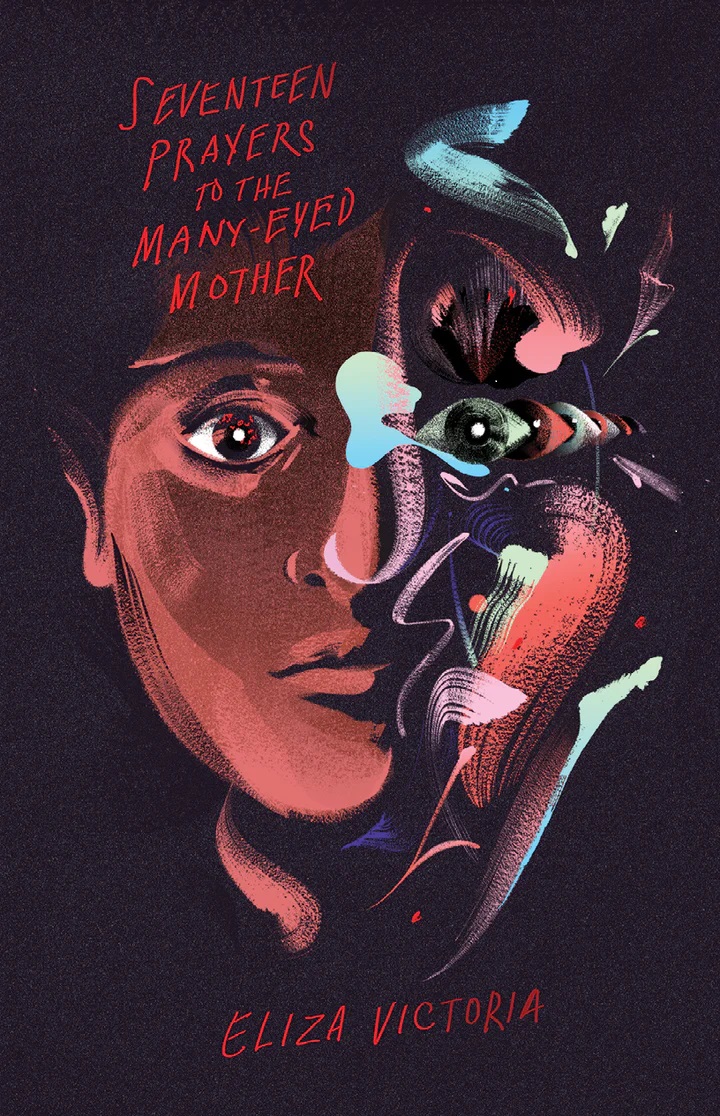by CZERIZHA KAIZEL S. ADZUARA

DESPERATION LURES people to drastic measures. Those who ought to overcome their plight often resort to means that are most accessible to them— even if those means are perilous.
In the Philippines, Filipinos rummage through limited choices to endure economic hardships. Due to the circumstances caused by systemic neglect, they are accustomed to gambling with risk as they crawl their way to survival.
A depiction of this social phenomenon is Seventeen Prayers to the Many-Eyed Mother. Published by Avenida Publishing House, the collection of 17 short stories was written by Carlos Palanca Memorial Awards for Literature awardee Eliza Victoria. She also authored several novels such as National Philippine Book Award-winning Dwellers (2014) and the fantasy-fiction novel Wounded Little Gods (2016).
Victoria’s Seventeen Prayers to the Many-Eyed Mother is an amalgamation of Filipino survival endeavors. Their socioeconomic-driven ventures mostly involve mythological entities and dark peculiar circumstances. Each tale has a world of its own, and each exhibits a supernatural portrayal of its conflict and protagonists.
The collection begins with the story titled Carpe Noctem. It captures how the immortal and mythical character Brenda helps the protagonist Michelle alleviate her internal conflicts brought upon by her disillusionment with working abroad. Another similar story is The Missing, where the main character Harold meets the ghost of his future lover amid his emptiness.
These stories use the plot device deus ex machina, where entities such as Brenda and ghosts are employed to aid protagonists with their plights. Some stories in the collection similarly use the same plot device. However, these elements also wield metaphors that further gratify the meaning and social relevance of the stories.
Extended metaphors
From the title itself, the book already conveys its bizarre and mythological flavors. The author’s strong use of imagery establishes an eerie world that consequently allures readers into a new realm. This strengthens the aesthetic value of the text.
A Prayer to the Many-Eyed Mother, for example, narrates three Filipino-American women who are to make a blood sacrifice for an American visa. The three main characters confront a moral dilemma as they yearn for opportunities that are lacking in their home country.
Likewise, the story Where you are now is better than where you were before also presents the struggle of a Filipina who works and studies in Sydney for a higher wage.
Additionally, Fortitude offers a post-apocalyptic world, where Sara dreams of migrating to a beautiful and nourishing planet called Fortitude. However, the green planet is only a facade of a better life. It is ruled by corrupt officials and over-militarized customs.
“I’m here because with the state of politics back home I was starting to feel like a monster, treating kindness as if it were a finite thread that I have to hold on to, to keep from unraveling.”
Through these stories, Victoria provides a milieu of the Philippines, painting the characters as Filipinos who choose (and even dream of) greener pastures. The painted milieu depicts the country’s extrajudicial killings, government suppression, poor public transportation and working conditions, and the widening gap between the social classes.
This is where magic realism comes into play. The stories are weaved with dark supernatural events and entities that extend as a metaphor for the socio-economic conditions of Filipinos. They are not only driven by their fantasy components. The stories’ incorporation of magical elements and social events equips them with a more pronounced sociological texture.
Moreover, the stories such as Queen Midnight and Fairy Tales have an environmental tone. Queen Midnight, euphemizes a natural calamity called the Surfacing (of a monster).
Fairy Tales unfolds an account of the winged diwatas or fairies who live as a minority in human society. As creatures from the lost rural world named Lambana, the diwatas adapt to human urbanization. They are robbed of their land by greedy corporate ambassadors and are pressured to fit in with humanity at the expense of their cultural identities.
Both of the stories portray the climate and environmental problems in the country. Eliza Victoria provides a context of the environmental implications in the Philippines with the narrative use of the supernatural. The sublime intertwining of magical realism and ecocriticism further satiates the sociological texture of the stories.
Some stories center more on the individual or internal conflict. Titles such as The Seventh, After the Crash, and Blessed are Those Who Suffer use grief and disillusionment as their common themes. Characters possess certain behaviors that are more personal than socially driven.
However, some stories fall short when it comes to their denouement. There are certain plots that are too abrupt. They provide readers with open-ended conclusions. Nonetheless, this allows readers to intricately draw more from the stories.
Overall, Seventeen Prayers to the Many-Eyed Mother artistically encodes how Filipinos endure desperation and displacement in their pursuit of a better living. As the Filipino masses also labor to make ends meet in the current economic crunch, ancient gods, prayers, and blood sacrifices can only do so much. F



